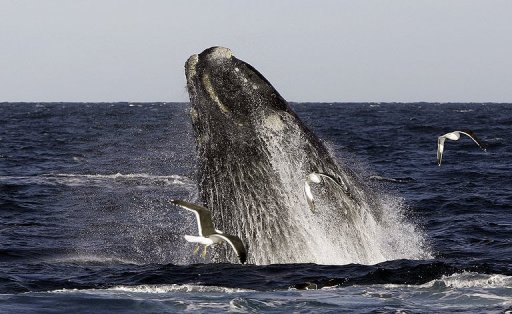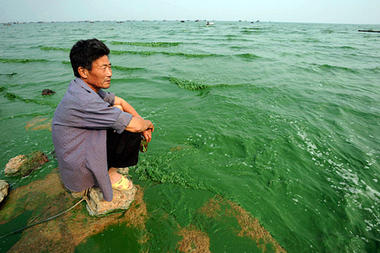
© AFPA Franca Austral whale (also known as Southern Right Whale).
Agadir, Morocco - Fatal strandings of southern right whales around Argentina's Valdes Peninsula have soared in recent years, and worried scientists are not sure why, the International Whaling Commission heard Friday.
From 1971, when systematic monitoring began, only a relative handful of whale deaths were reported over the next three decades.
Starting in 2003, however, the mortality rate began to soar: from 31 that year, to 47 in 2005, 83 in 2007, 95 in 2008 and 79 last year, the IWC's scientific committee reported.
"Over 90 percent of the deaths have been of first-year calves," the scientists said.
The Valdes Peninsula is one of the most popular whalewatching venues on the planet, attracting some 200,000 eco-tourists every year hoping to see the huge mammals -- which grow up to 17-metre (56-foot) long -- in their element.
It is also a critically important breeding and nursery ground for right whales.
Three causes, possibly in combination, have been fingered as possible culprits.
